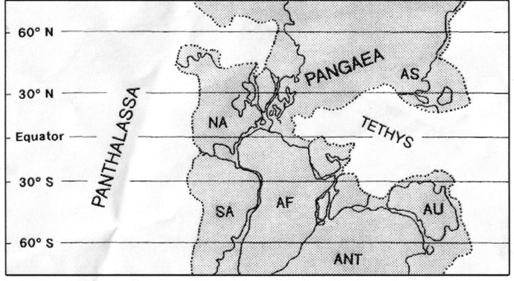
Figure 1. Pangaea and Panthalassa: a reconstruction 220 myr ago during the Trias (from Van Andel 1996)
2. The need for Panthalassa
The assembly of the continents into one mass during a hundred million years from the Permian into the mid-Jurassic is well-established, the evidence being largely based on Palaeomagnetism. Pangaea would seem to be a reality, though there may still be questioning voices. Two published reconstructions are shown in Figures 1 and 2. Since the early Jurassic (~200 million years ago), this assemblage has split apart, with the formation of the oceans that we have today. This could be explained by global expansion [advanced by Hilgenberg (1965); Carey (1976); and Scalera (2003a)], but the difficulties are elegantly expressed by Van Andel (1994)]:
“…the expanding Earth hypothesis, stubbornly defended by S. Warren Carey of Tasmania. Take a small Earth, equipped 250 million years ago with a single supercontinent, and make it expand in the Mesozoic. As it swells ,the supercontinent is torn and the pieces scatter wide and far. At first sight this makes sense, it dos not require subduction, nor can it account for the compression of the crust that builds mountains, but small changes in the model might accommodate the points ,nor can it account for the well-documented drift of the continents that assembled them to join the supercontinent in the first place.”
Unfortunately, there is no physical evidence at all that the Earth has expanded, indeed it is generally believed that the planet has maintained its size through the 4 billion or so years of recorded geological history. If so, a complimentary superocean must have co-existed with Pangaea, and as Pangaea accreted this must have been formed, to keep the circumference more or less the same.
There is another reason for needing Panthalassa: while Pangaea existed the seas had to go somewhere? There is a continuing record of marine sedimentation and thriving marine life through geological time, including through the age of Pangaea. One might resort to a far-fetched idea of Pangaea entirely surrounded by shallow shelf seas underlain by continental crust (no deep ocean), or Pangaea itself covered entirely by shallow seas, but neither is surely consistent with the geological record, and the first requires an enormous addition of continental crust that is totally absurd. No, the existence of Pangaea requires a complimentary Panthalassa.